how to find the best running shoe for me
Walk into any local running store and you lot'll face a colorful wall holding dozens of shoes. Needless to say, finding the all-time-fitting shoe among numerous choices isn't easy. To brand matters more complicated, not every shoe is right for you lot. Whichever pair you choose must fit properly from heel to toe and experience comfy with your regular running stride.
You can shop online as well, but there's a little more adventure involved if yous don't get to endeavor on before you lot buy. Luckily, most retailers volition offering a adventure-free trial menstruation and then yous can still lace up your shoes and head out for a exam run, similar you would at the store. (Merely double cheque the return policy, and always proceed the box in case you practise need to send them dorsum or bandy sizes.)
Whether y'all shop online or in-store, we're here to help. Read on for a breakup of shoe anatomy, mutual shoe-buying mistakes, and a list of our favorite shoes right now in your favorite category.
Shoe Anatomy 101
It'due south helpful to understand the purpose of each element of a running shoe Even the slightest differentiation may affect your feel. Here are the main elements to know. (For a deeper swoop, you can learn more about all the elements of a running shoe here.)
Upper
Everything above the sole. Traditionally made with layers of fabrics and mesh sewn and glued together, modern models increasingly use knitting and 3D printing to create one-piece uppers that stretch and support in appropriate places.
What to look for: An upper that is shaped like your foot and smooth wherever it touches, not bounden or chafing anywhere.
Talocrural joint Collar
The wrap at the top of the shoe opening that holds the heel down in place. Some shoes apply thick padding while others rely more on the shape.
What to wait for: Pay attention to whether your heel slips, how the padding interacts with the bones on the side of your ankles, and whether the bend on the dorsum irritates your Achilles tendon.
Heel Counter
A semi-rigid cup layered within the rearfoot that cradles and supports your heel. Some shoes have an external heel wrap that serves a similar function while minimalist shoes accept eliminated the heel counter to allow full freedom of movement. Inquiry has shown that heel counters do not provide motion control, but they do center the heel for stable landings and support.
What to await for: A heel that allows a comfortable ankle move.
Saddle
The reinforced area effectually the instep—the curvation of a person's foot between the brawl and the ankle—that interacts with the laces to hold the shoe securely on the foot. Designers have adult a diverseness of overlays, eyelets, and lacing systems to mold the saddle closely to any foot shape.
What to wait for: Pay attending to how the saddle fits and holds your human foot, providing a secure feeling with no slippage while allowing for the natural doming of the curvation during your stride.
Toebox
All of the upper from the front of the eyelets to the stop of the shoe. Oftentimes capped with a reinforced toe bumper that holds the material off your toes and protects from stubbing, particularly in trail shoes.
What to expect for: A toebox that stays out of the way, allowing your pes to flex and spread out naturally in both width and length without binding or rubbing your toes.
Outsole
Where the rubber meets the road. Often made of a variety of rubber or foam compounds placed in strategic areas to increment article of clothing life or enhance bounce or flexibility.
What to look for: Materials that provide traction and immovability without adding excess weight or stiffness, and for a footprint shape that matches yours and gives you lot the desired level of stability underfoot.
Flex Grooves and Toe Spring
To brand the shoe bend like your foot bends, many shoes use grooves nether the ball of the pes. Turning the toe up, called toe spring, or cutting away the midsole into a rocker design likewise allows the foot to roll through the stride. Small differences in location or angle can alter the mechanics and feel, and what degree of flex works best for your stride equally it changes with speed.
What to wait for: A shoe that flexes or rolls the manner your foot wants to move—at the step for which you'll exist using the shoes.
Midsole
The foam material between the outsole and the upper, designed to cushion the runner from impact forces and guide the foot through the stride.
What to look for: A midsole thickness and fabric that feels right at running speeds, fits your preference of softness or firmness, and doesn't have excess weight.
Heel Cushioning
Midsole material designed to minimize the bear on shock of a heel strike. Besides using a variety of cushioning materials, some shoes feature a softer "crash pad" area on the outer edge of the foot or a rounded outer heel to smooth the landing. Research has shown that the body provides the majority of cushioning for your joints and that you land harder in a more cushioned shoe, then heel cushioning is largely a matter of perceived comfort.
What to await for: A balance between cushioning, stability, and ground feel, and annotation whether the shoe touches down where you await it to and rolls into the stride a style that feels correct.
Forefoot Cushioning
Midsole material designed to reduce the impact of the largest forces of the stride that occur at forefoot loading and push off. While body mechanics largely provide cushioning to everything in a higher place the ankle, forefoot shoe cushioning protects the structures of the foot. The hope of new "energy-return" materials and designs is that they can both protect and propel your foot.
What to expect for: Pay attention to the shoe'south responsiveness, looking for a balance between cushioning comfort and a firm push-off platform.
Heel-Toe Driblet
The difference in pinnacle between your heel and the brawl of your human foot when continuing in the shoe. Experts disagree on the importance of drib related to injuries (remember Vibrams?), but concur that irresolute drop distributes forces differently to the foot and leg, and can alter your stride.
What to look for: A shoe that feels right throughout the pace, from touchdown to toe-off, and reduces stress on whatever weak parts of your human foot.
Stabilizing Features
Designers use a diverseness of technologies (such equally medial posts, dual-density foams, varus wedges, guide rails, and wider shoe geometries) to effort to keep the pes from excessive motion, primarily over-pronation or rolling inwards. Scientists agree that most people practise non demand pronation correction, only command and stability devices appear to assistance some runners maintain their preferred movement path.
What to wait for: A shoe that allows your human foot to move comfortably and naturally through the stride, with the shoe providing stability equally support, not correction.
Sockliner
The removable pad of foam inside the shoe that cushions the contours of the lesser of your pes. The sockliner, along with shoe geometry, provides most of what people remember of every bit "arch support" and gives the shoe its initial step-in comfort.
What to await for: Pay attention to how the shoe feels on the run, where softer is not always ameliorate and the human foot works dynamically to provide its own support and cushioning.
Avert Common Shoe-Buying Mistakes
Specialty running store staffers see runners making the aforementioned mistakes once more and once more when they come up in to buy shoes. But not you, non anymore, thanks to this advice from v prominent store owners and managers.
Mistake #1: Buying for looks. "We try to encourage every guest we work with to focus on fit, feel, and function over manner. Making certain it is the right shoe for your specific needs is paramount. If the shoe doesn't perform for you, then it doesn't actually matter what information technology looks like."—Michael Zabrodski, Philadelphia Runner (Philadelphia, PA)
Fault #2: Non asking for deals. "When y'all're fix to pay, inquire if there are whatsoever discounts available for running club members. Near specialty stores offer discounts from x to 20 percent; nosotros offer 10 percent to our local track club. It costs $20 to join information technology, so if you buy two pairs of shoes, your track membership is paid for."—Tim Rhodes, Run For Your Life (Charlotte, NC)
Error #3: Buying shoes that are too small. "Tight-plumbing equipment shoes lead to blisters and black toenails and that kind of affair. Women in particular are used to wearing their shoes close-plumbing fixtures, every bit they're ofttimes more self-conscious about the size of their feet. We like to say, 'Play the pianoforte with your toes,' significant the fit should be roomy enough in the forefoot—almost half an inch—but non sloppy."—Mike Johnson, Route Runner Sports (San Diego, CA)
Fault #4: Shopping at the wrong time of day. "A lot of times people come up in the morn and say, 'This is the shoe I demand.' Then they'll come up back the next solar day and say, 'I wore them at 5 p.m. and they were also pocket-size.' Your anxiety start swelling in the morning and they don't cease until about 4 p.m. That's as large equally they're going to get, and then always buy your shoes in the evening."—Tish Borgen, Running Room (Minneapolis, MN)
Fault #5: Assuming your size. "People assume that a size is a size—that an 8 in a Nike will exist the same every bit an viii in a New Balance. But sizes differ because of unlike lasts (pes forms), the unlike shape of the upper, and the way the shoe is stitched together. Take your anxiety measured every time you buy, and always try the shoes on for fit."—Johnny Halberstadt, cofounder of the Boulder Running Company (Boulder, CO)
Some final tips:
- Get to a specialty running store, not a big-box or section store. A salesperson will discover your gait and bring a pick of shoes that they believe best fit your needs. They'll let you lot try each one, and assist yous narrow information technology down to the right pick.
- Get your anxiety measured. Yous may remember yous know your size, but your anxiety alter over time, and one model's fit can be drastically unlike from another's.
- When yous go shopping, bring along the shoes, socks, and inserts you've been using. That manner, when y'all endeavour on a new shoe, you can compare it directly to your current feel.
- Shoes should be replaced every 300 to 500 miles depending on the brand and model. Go along runway of the date that you bought them in your training log and make note of when they start to experience worn downwards.
Our Recommendations
Now that y'all know what you're looking for in a running shoe, it's time to leave there and buy a pair.
We review hundreds of shoes every year here at Runner's World, so we've compiled the best shoes for all types of runners and preferences. Whether you desire lots of plush cushioning, maximum ground feel, or something in betwixt, we have the shoe for y'all below.
All-time Running Shoes
The selections below are our Editors' Pick selections from our most recent shoe guides. We chose the following top models based on extensive feedback from runners too as exam results from the RW Shoe Lab. (Find more of our favorite shoes for whatever blazon of run here.)
All-time Cushioned Shoes
The shoes shown here give you that ahhh feeling of plushy-cloud comfort, more and then than any other category, in both our lab and the wear tests. (Find more cushioned running shoes.)
Best Lightweight
Our lab data charts reported these road and trail shoes every bit the lightest in the bunch. Our habiliment-testers raved about how effortless the miles felt in these picks, and they loved the sensation of not being weighed downwardly. (Find more lightweight running shoes.)
Best Stability Shoes
Stability shoes experience sturdy, similar they're bracing your foot and guarding against actress movement that could crusade injury. These choices are rock-solid picks for feeling secure. (Find more than stability running shoes.)
All-time Trail Shoes
When you lot're going off-road, your shoes need actress traction and durability. Nosotros tested the post-obit shoes on our own trails and they passed with flying colors. (Check out more of our favorite trail shoes.)
Additional reporting past Amy Gorin and Jennifer Van Allen
This content is created and maintained past a 3rd party, and imported onto this folio to help users provide their email addresses. You may be able to detect more data virtually this and similar content at piano.io
Source: https://www.runnersworld.com/gear/a20842305/how-to-buy-the-right-running-shoes/
Posted by: ellisblead1993.blogspot.com








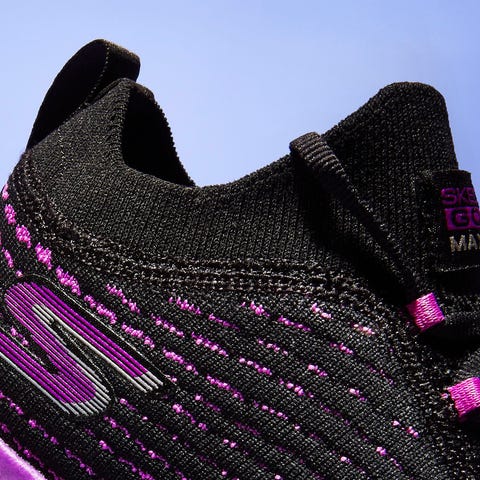








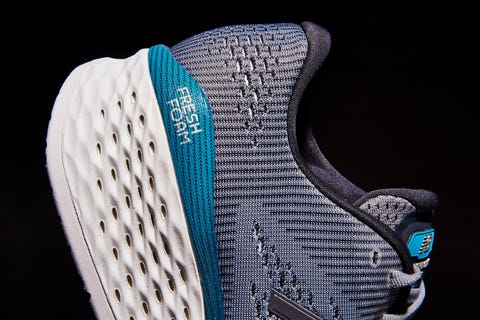



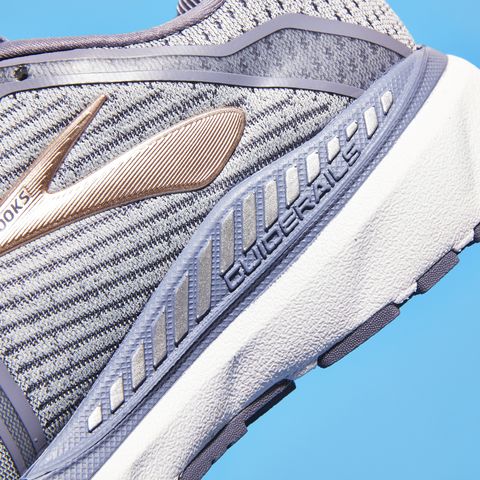











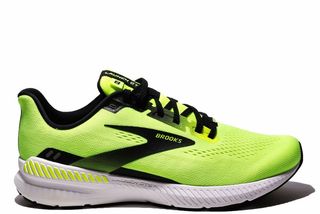




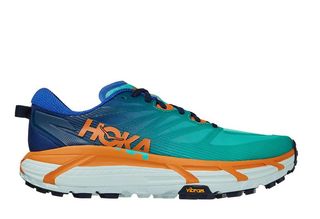




0 Response to "how to find the best running shoe for me"
Post a Comment